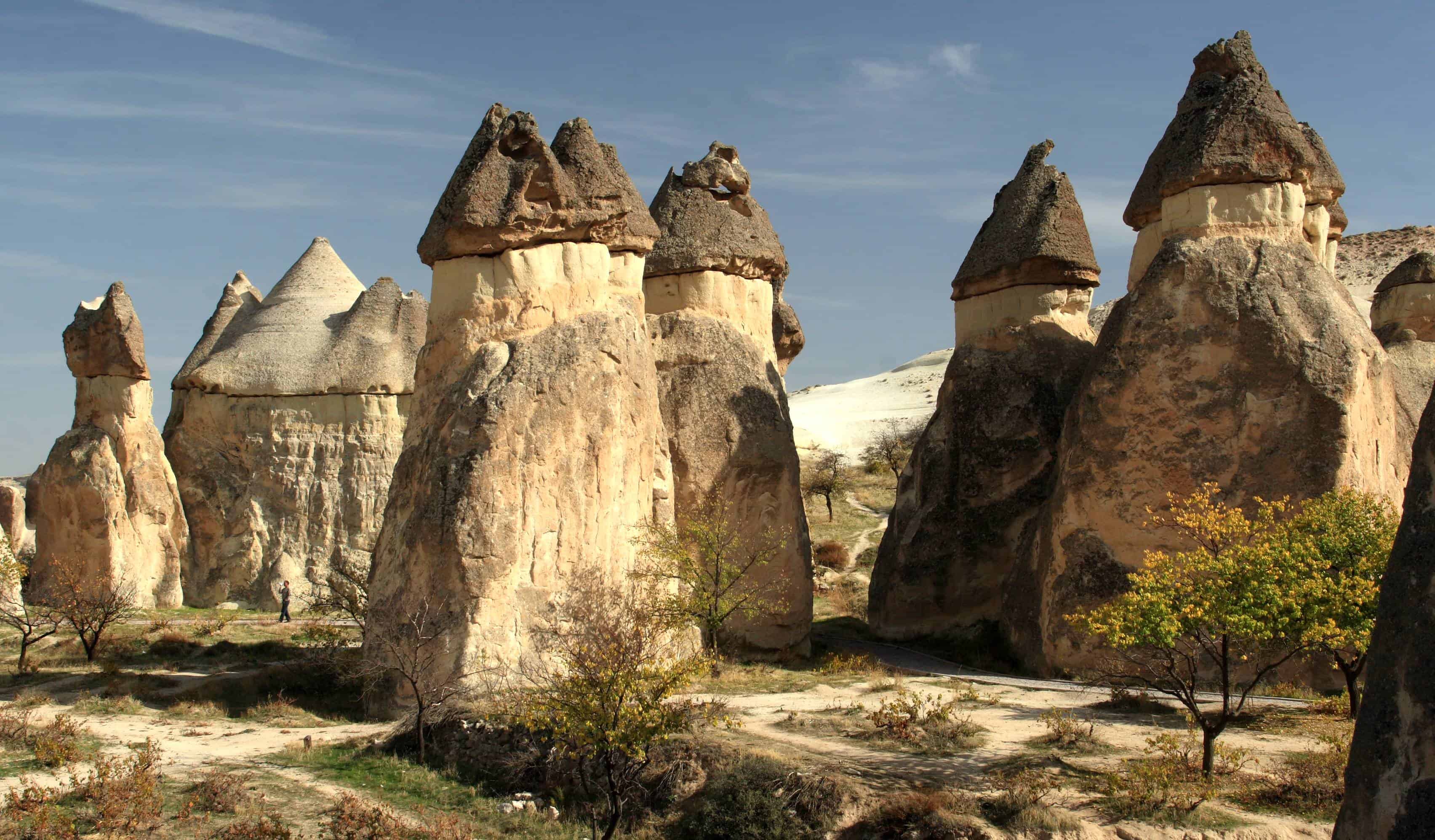Turkey has 13 properties that have been inscribed to the United Nations Educational, Scientific and Cultural Organization's (UNESCO) World Heritage List for their importance to the cultural development and landscape of the country. In layman's terms, the sites are the best of the best attractions in the country of Turkey and a visit to them should not be missed. For the UNESCO touring junkie on a strict timetable, here are some of the must see sites from Turkey's UNESCO World Heritage List.
Hattusa: The Hittite Capital
 Creativecommons.org/ zolakoma
Creativecommons.org/ zolakoma
The Hittites are the oft-forgotten civilization of early antiquity, but their contributions to history cannot be overlooked. Their biggest contribution was becoming the first civilization to smelt iron and create stronger tools and weapons from it, a major advantage against the civilizations still using weaker bronze weaponry. Hattusa, nestled in the arid deserts of northern Turkey, served as the civilization's capital city. There is not much standing in the ruins today, but what remains has persisted for over 3,000 years. Visitors can let their imaginations run wild in the sprawling ancient city as well as browse some of what archaeologists have dug up from the area.
Nemrut Dag
 Creativecommons.org/ Verity Cridland
Creativecommons.org/ Verity Cridland
From afar, Mount Nemrut in southeastern Turkey looks like your average sandy peak that can be found all over the country. However, when visitors hike atop this mountain, they will find a scene that would look right at home in an Indiana Jones film. The mountain once hosted huge statues of King Antiochus, a rumored descendant from Apollo himself, which stood up to nine meters tall. Today, the statues have all been knocked down by the winds of time but their heads and pieces of their strong marble bodies still remain littered all over the mountaintop. The most popular way to see this particular UNESCO site is at sunrise where the mountain is the first in the region to see the sun. However, visitors looking to see it during this time will need to start hiking at two in the morning.
Xanthos-Letoon
 Creativecommons.org/ Colin and Sarah Northway
Creativecommons.org/ Colin and Sarah Northway
Located just south of Istanbul and past luxurious natural hot springs (which are also worth a visit) is the historic battlefield of Xanthos-Letoon. This stretch of land has been bathed in the blood of defeated Persians, Greeks, Romans and Macedonians. Xanthos was originally the ancient Anatolian city of Lycia that was often fought over by many civilizations after crossing Istanbul's land bridge. This fierce war has since resulted in the city being leveled to the ruins that exist today. Just outside of the city is Letoon, the sanctuary of the Greek goddess of motherhood and mother of Apollo and Artemis, Leto. While Xanthos is little more than the foundations of buildings long gone, the Letoon has better preserved pillars, though both are serve as a wonderful visit for history buffs.
Goreme National Park and the Rock Sites of Cappadocia
 Creativecommons.org/ Frank Kovalchek
Creativecommons.org/ Frank Kovalchek
Goreme is a town in the Cappodocia region, right in the center of Turkey. The town is much like any town in Turkey, packed full of buildings that house thousands of people, but the entire city is carved into the rocks. Houses with small windows carved into mountainous pillars, churches that lay half in the hillside and what can see seen from above is just the tip of the iceberg. Underground there are even more rooms hidden and carved into the rock. Goreme and its rock sites are a marvel of mankind's occasional ability to co-exist with nature. Visitors to the site should take a moment to step back and consider just how much carving and scraping it must have taken to create this city. While modern buildings are quickly taking over, the city works hard to preserve the rock structure houses.
Great Mosque and Hospital of Divrigi
Much like Goreme, another stunning rock structure sits in the eastern Turkish city of Divrigi. Within the Divrigi, a stunning medieval hospital and ornate mosque has stood as guardian to the city of over 700 years. This UNESCO site is one that doesn't show its age, the carvings that are on the stone front of the building look as if they had been put there just yesterday. The designs are so crisp and show little wear from the harsh desert wind. Visitors can walk the courtyard of the area to marvel at the architecture or venture inside to view the unique trappings of the medieval mosque and hospital. Visitors should be respectful while inside the mosque as it still functions today as a place of worship for the locals.
Archaeological Site of Troy
 Creativecommons.org/ Frank Kovalchek
Creativecommons.org/ Frank Kovalchek
Troy is one of Turkey's most famous cities from history. While the Greeks may have burnt the city and salted the land after the Trojan War, remnants of the city still remain. Archaeologists have dedicated their time to digging up artifacts from the legendary Trojan War. However, the area is not some dusty dig site like many would imagine. The Turkish government relishes in Trojan history and encourages visitors to the country to come and see it. The nearby museum shows some beautiful artifacts from the city and the war it waged in all their splendor. The Turkish government even built a model Trojan horse that visitors can climb into and take pictures of.


